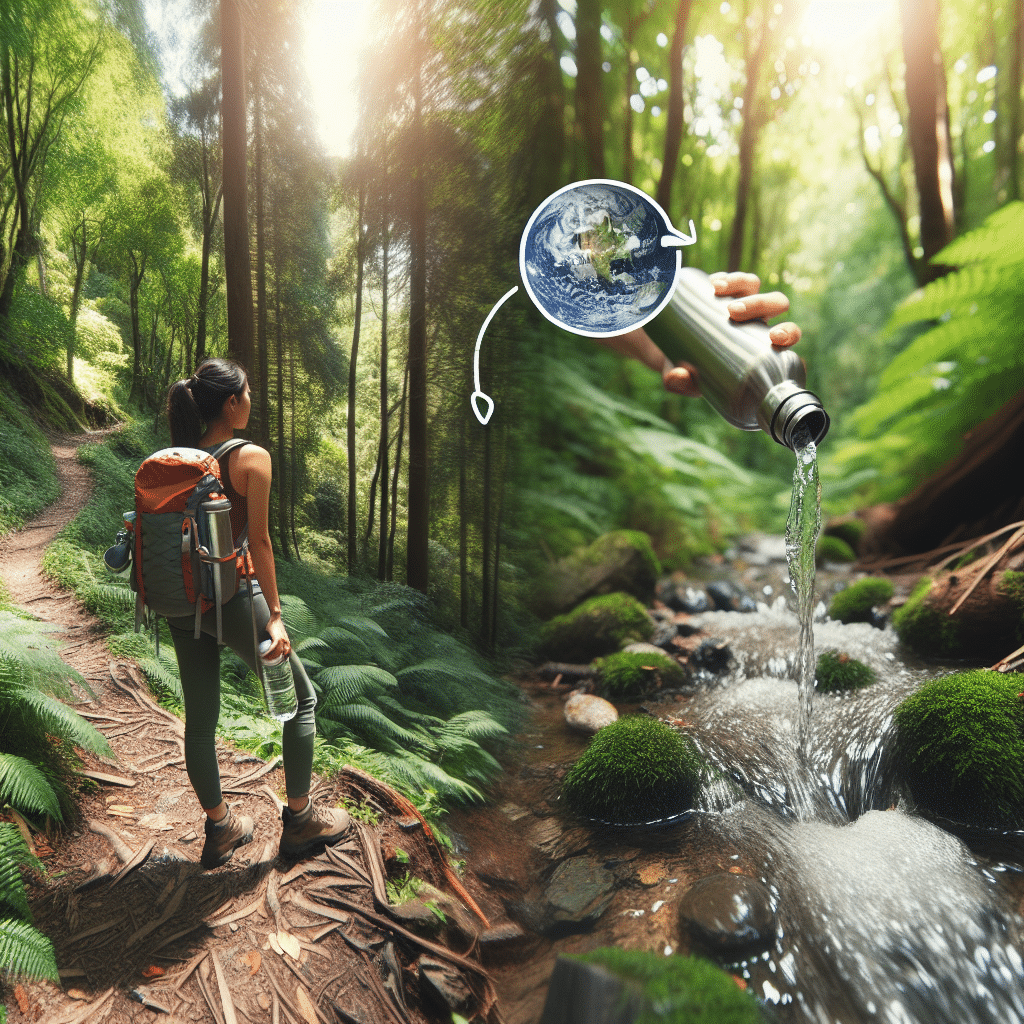Understanding Eco-Friendly Hiking Hydration Practices
The Importance of Staying Hydrated
Hydration is crucial for hikers. When hitting the trails, maintaining adequate fluid levels ensures optimal physical performance and mental alertness. Dehydration can lead to fatigue, headaches, and impaired decision-making, which can be dangerous in natural settings. However, it’s essential to consider not just how much water you consume, but how you source and use it. The following sections detail eco-friendly hydration practices that allow you to enjoy the great outdoors while minimizing your environmental impact.
Choosing Sustainable Water Sources
-
Natural Springs and Streams
Research your hiking destination in advance to identify natural water sources. Springs and streams can be great options, but they might be contaminated with pathogens. Always test the water quality before consumption. Look for sites that are marked as safe drinking water. -
Rainwater Collection
Using rainwater can also be an eco-friendly way to hydrate. Collecting rainwater requires proper gear, such as a clean container or tarp. Ensure that you are following local regulations concerning rainwater collection.
Water Filtration and Purification
-
Water Filters
Investing in a portable water filter is an excellent long-term solution. Filters can remove most contaminants from natural water sources. Choose filters that are lightweight and compact for easy transport. Look for filters that can handle a high volume of water without clogging. -
UV Light Purifiers
Ultraviolet light purification systems are compact and efficient for killing bacteria, viruses, and protozoans in water. They are typically battery-operated, so it’s wise to carry extra batteries for extended trips. -
Chemical Purification
Water purification tablets are another viable option for backpackers. They are compact and can treat water in a short amount of time. Choose tablets that contain chlorine dioxide, which is effective against bacteria and viruses.
Eco-Conscious Hydration Gear
-
Reusable Water Bottles
Replace disposable plastic bottles with durable, reusable water bottles made of stainless steel or BPA-free plastic. Look for features like insulation to keep your water cool. -
Hydration Packs
Hydration packs are ideal for hikers who prefer hands-free drinking. They consist of a water reservoir and a tube that lets you sip while walking. Opt for packs made from recycled materials to further reduce your environmental footprint. -
Collapsible Water Containers
Collapsible containers are lightweight and can be easily packed when empty. They are perfect for refilling in natural water sources and are designed for sustainability.
Minimal Impact Hydration Strategies
-
Plan Ahead and Carry Enough Water
Before setting out, calculate your water needs based on the length of the hike, expected temperature, and exertion level. A general guideline suggests drinking about a half-liter of water per hour during physical activity. -
Conserve Water
Be mindful of your water consumption throughout your hike. If you’re traveling with a group, establish a rotation system for carrying extra water. -
Use Biodegradable Soap
When cleaning hydration equipment, use eco-friendly, biodegradable soap. Regular soaps can contain harmful chemicals that disrupt aquatic life.
Responsible Waste Management
-
Dispose of Waste Properly
If you must filter water in the backcountry, ensure that you are at least 200 feet away from water sources when disposing of contaminated water. Leave no trace by ensuring that all waste is packed out. -
Use Composting Toilets
When nature calls, look for trails equipped with composting toilets or established latrines. If none are available, follow Leave No Trace principles by digging a hole at least 6-8 inches deep, 200 feet away from water sources.
Eco-Friendly Practices While Hiking
-
Stay on Designated Trails
To minimize environmental impact, always stay on established trails. Creating new paths can erode soil and damage local flora, leading to increased runoff and pollution. -
Educate Yourself About Local Ecosystems
Knowledge about the local flora and fauna can enhance your hiking experience and help you understand the importance of maintaining a balanced ecosystem. -
Participate in Conservation Programs
Many organizations offer programs focused on trail maintenance and environmental education. Volunteering can help raise awareness and improve sustainability practices in the areas you love.
The Role of Personal Responsibility
-
Be Mindful of Local Regulations
Always adhere to local regulations regarding water usage and environmental protection. Being aware of restrictions helps protect habitats. -
Share Your Knowledge
Educate fellow hikers about sustainable hydration practices. Sharing information can promote a collective effort to preserve natural resources. -
Support Eco-conscious Brands
Choose brands and products that prioritize eco-friendliness in their designs and practices. By supporting companies that donate to environmental conservation or use sustainable materials, you encourage a cycle of eco-responsibility in the retail space.
Monitoring Hydration Status
-
Check Urine Color
A simple way to monitor hydration levels is by checking the color of your urine. A pale yellow indicates proper hydration, while dark urine suggests you may need more fluids. -
Recognize Symptoms of Dehydration
Be aware of early signs of dehydration such as dry mouth, fatigue, and dizziness. If you notice these symptoms, increase your fluid intake immediately. -
Adjust Intake for Conditions
Consider factors like elevation changes or high temperatures that can exacerbate dehydration. Adjust your hydration strategy to maintain optimal fluid balance.
By integrating these eco-friendly hiking hydration practices, you can stay hydrated while respecting nature, ensuring that the wilderness remains stunning for generations to come. Make informed choices that contribute to your wellbeing and that of the ecosystems you enjoy exploring.
